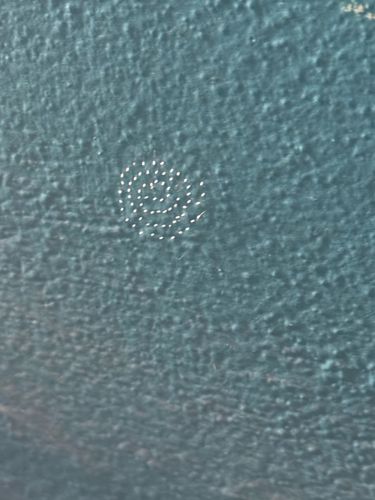Lacewing eggs
Scientific Name: Chrysopidae (eggs)
Order & Family: Neuroptera, Chrysopidae
Size: Individual eggs are typically less than 1 mm in diameter, with the stalk adding a few more millimeters to their height.

Natural Habitat
Leaves and stems of plants, often in gardens or agricultural areas. The eggs are laid individually on silken stalks, often on the underside of leaves or other surfaces to protect them from predators.
Diet & Feeding
The adult lacewings (which hatch from these eggs) have varying diets, with some feeding on nectar, pollen, and honeydew, while others are predatory. The larvae that hatch from these eggs are highly predatory, feeding on soft-bodied insects.
Behavior Patterns
Female lacewings lay these distinctive stalked eggs, often in a spiral or cluster pattern as seen in the image. This behavior is believed to protect the eggs from predators (especially ants) and prevent cannibalism among the larvae once they hatch. The eggs hatch into voracious, alligator-like larvae that actively hunt prey.
Risks & Benefits
Lacewing larvae are highly beneficial insects, acting as natural predators of many garden and agricultural pests, including aphids, mealybugs, whiteflies, thrips, and spider mites. They play a significant role in biological pest control, reducing the need for chemical pesticides. There are no known risks to humans from lacewing eggs or adults.
Identified on: 9/20/2025